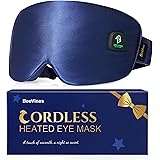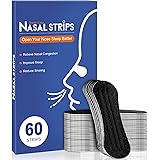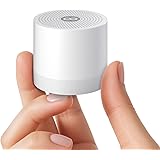Achieving a truly perfect night’s sleep often feels like an elusive quest in our busy modern lives. The video above documents one individual’s humorous yet insightful journey to attain a coveted 100% sleep score by testing an array of innovative sleep aids and unconventional gadgets. This deep dive explores how these products aim to revolutionize your rest, highlighting both their potential and their peculiar pitfalls.
Our relentless pursuit of optimal health and peak performance consistently draws attention to the critical role of sleep. It profoundly influences our physical health, mental clarity, and even our emotional well-being. Modern lifestyles, unfortunately, often sabotage our natural sleep cycles, leaving many of us perpetually tired and seeking effective sleep improvement products.
Understanding Your Sleep Journey: The Quest for Ideal Sleep
Many individuals, much like the host in the video, feel their sleep quality could be significantly better. The drive to achieve a perfect 100% sleep score stems from a desire for enhanced well-being and productivity. This aspiration prompts people to explore various solutions, ranging from scientific light therapy to whimsical, wheeled alarm clocks.
The host’s personal struggles, exacerbated by the demands of a YouTuber lifestyle, perfectly illustrate common sleep challenges. Staying up late for content, consuming excessive caffeine, and constant social media scrolling before bed are widespread habits that disrupt our natural sleep rhythms. Embracing this challenge, the video’s creator embarked on an ambitious experiment to identify what truly contributes to a restorative night’s rest using a variety of sleep improvement products.
Light Therapy: Resetting Your Internal Clock for Better Sleep
The body’s circadian rhythm, our internal 24-hour clock, is heavily influenced by light exposure. Aligning this rhythm is fundamental for consistent and high-quality sleep. Neurobiologists like Andrew Huberman emphasize the importance of early morning natural light for regulating our sleep-wake cycle effectively.
Re-Timer Light Therapy Glasses: A Bright Idea?
The Re-Timer light therapy glasses aim to mimic natural light by shining a specific green-blue wavelength from under the eyes. These glasses are designed to signal the brain about appropriate sleep and wake times, especially useful for managing jet lag or seasonal affective disorder. The product promises to reset your body clock within 30 to 60 minutes of daily use.
However, the host found the experience of wearing them quite jarring, likening it to constantly facing oncoming headlights. Despite a reported 90% sleep score on one night, the initial discomfort and the voiding of the money-back guarantee when using a discount code were significant drawbacks. Imagine if these glasses could seamlessly integrate into your morning routine without causing visual discomfort; that would truly elevate their appeal for improving sleep.
Beyond specialized glasses, simply exposing your eyes to natural sunlight first thing in the morning offers similar benefits. Establishing a regular morning routine that includes outdoor time can naturally synchronize your circadian rhythm. This simple, free habit often outperforms expensive gadgets in the long run, offering a more organic path to perfect night’s sleep.
The Alarm Clock Dilemma: Gentle Awakenings Versus Forced Starts
How we wake up can significantly impact our mood and energy levels throughout the day. Some prefer a gentle transition into wakefulness, while others need a more insistent prompt to get out of bed. The video explores both extremes, showcasing a range of sleep products designed to tackle this morning challenge.
Clocky: The Runaway Alarm That Gets You Moving
Clocky is an alarm clock designed with wheels that rolls off your nightstand, forcing you to chase and retrieve it to shut off the alarm. The concept aims to eliminate snoozing and ensure immediate physical activity upon waking. For those who struggle severely with hitting the snooze button, this might seem like a clever solution.
The host, however, found Clocky’s screeching alarm terrifying and its erratic movements less effective than advertised. It provided a shocking, unwelcome start to the day rather than a motivating one. Imagine an alarm clock that encourages movement with a pleasant, personalized challenge, rather than a jarring pursuit; that would represent a true innovation in morning routines to improve sleep.
Sunrise Alarm Clock: A Gentle Approach to Waking Up
In stark contrast, the sunrise alarm clock simulates a natural dawn, gradually increasing light to gently rouse you from sleep. This mimics the body’s natural waking process, which many find less stressful than a sudden, loud alarm. The device often includes nature sounds to enhance the calming effect.
The host found this device a much more pleasant way to begin the day, despite a lower recorded sleep score of 84% (attributed to waking up early for filming, not product fault). While the sunset mode was deemed gimmicky, the sunrise function offered a relaxing transition into wakefulness. This type of alarm actively aids in sleep improvement by supporting a natural circadian wake-up, contributing positively to your quest for a perfect night’s sleep.
Optimizing Respiration: Breathing Aids for Enhanced Sleep Quality
Proper breathing during sleep is crucial for oxygen intake and preventing disruptive conditions like snoring. Nasal breathing is generally considered superior to mouth breathing, facilitating better air filtration and nitric oxide production, which supports lung function. The video highlights several direct interventions for breathing challenges.
Lip Tape, Nose Purifier, and Chin Strap: Uncomfortable Solutions?
Products like lip tape, nostril purifiers, and chin straps are designed to encourage nasal breathing and reduce snoring. Lip tape aims to keep the mouth closed, while nostril purifiers open nasal passages, and chin straps hold the jaw in place to prevent mouth breathing. The theory behind these sleep products suggests that improved breathing translates to better sleep quality.
However, the host’s experience with these items was overwhelmingly negative. The lip tape wouldn’t stick over his beard and functioned more as a facial wax, while the nostril purifier had an off-putting smell. The chin strap proved so uncomfortable it woke him up. This demonstrates that while the concept of optimizing breathing for sleep improvement is valid, the execution of certain products can be a major barrier. Imagine if breathing aids were designed with ultimate comfort and discretion, making them genuinely wearable throughout the night; that would transform the user experience.
The Anti-Snoring Solution: Smart Nora and Beyond
Snoring is a common issue that can disrupt sleep for both the snorer and their bed partner, significantly impacting sleep quality. It often indicates partially obstructed airways during sleep. Various devices aim to alleviate snoring, with differing levels of invasiveness and effectiveness.
Smart Nora: A Gentle Nudge Against Snoring
The Smart Nora system features a pillow insert that inflates and deflates to gently reposition the sleeper’s head when snoring is detected. The goal is to open the airway without fully waking the individual. This innovative approach offers a non-invasive alternative to more traditional anti-snoring devices.
While the Smart Nora did cause the host to move his head, its microphone proved overly sensitive, activating for nearly every sound except actual snoring. This significantly undermined its intended purpose. The host’s inability to secure a refund further highlights potential consumer frustrations with such sleep improvement products. Despite the 89% sleep score reported, the product’s inconsistent performance and customer service issues present a notable concern. Imagine an anti-snoring device with perfectly calibrated sound detection, ensuring responsive yet subtle adjustments to your sleeping posture.
Blocking Out the World: Eye Masks and White Noise for Enhanced Rest
Creating an optimal sleep environment involves minimizing distractions, particularly light and unwanted noise. A truly dark room signals to the brain that it’s time to produce melatonin, the sleep hormone. Similarly, a consistent soundscape can mask disruptive noises, fostering a more serene sleep setting.
Bluetooth Eye Mask: Darkness and Sound in One
A Bluetooth-enabled eye mask combines total darkness with the ability to play white noise or other soothing audio directly into your ears. This two-pronged approach aims to create a personal sleep sanctuary, blocking visual and auditory stimuli that might hinder sleep. Such sleep aids are particularly useful for travel or in environments with uncontrolled light and sound.
The host found this $26 eye mask to be surprisingly effective, blocking out all light and providing comfortable audio. While the Velcro strap was noted as a minor flaw, allowing the mask to slip occasionally, it delivered a good night’s rest, resulting in an 88% sleep score. This highlights that effective sleep products don’t always need to be expensive or technologically complex. Imagine an eye mask with perfect light-blocking capabilities and seamless audio, custom-fit for supreme comfort throughout the night.
Temperature Regulation: The 8 Sleep Pod Cover Experiment
Body temperature plays a significant role in sleep initiation and maintenance. Our core body temperature naturally dips as we prepare for sleep and remains lower during deep sleep stages. Disruptions to this thermal regulation can make falling asleep difficult and fragment existing sleep cycles.
8 Sleep Pod Cover: Intelligent Climate Control for Your Bed
The 8 Sleep Pod Cover is an advanced mattress cover designed to actively cool and heat different zones of the bed. It utilizes water pipes and AI functionality to adjust temperatures based on individual sleep cycles, aiming to optimize thermal comfort for a perfect night’s sleep. This technology promises to keep sleepers at their ideal temperature throughout the night, adapting to their specific needs.
The host invested a significant sum ($3,600 plus a $24 monthly subscription) into this device. While it yielded impressive sleep scores of 93% and later 95%, suggesting it contributed to sleep improvement, the high cost and ongoing subscription were major deterrents. Concerns about water pipe leaks also arose, raising questions about its long-term reliability and value. Imagine a smart mattress that intuitively understands your body’s thermal needs, adjusting proactively to ensure uninterrupted, deep sleep without a hefty subscription fee.
The Mystery Device: Electric Stimulation for Relaxation?
Some sleep aids explore more experimental territories, often involving direct stimulation of the nervous system. These devices aim to induce relaxation or promote specific brain wave states conducive to sleep. However, their efficacy and safety warrant careful scrutiny.
Sleep Aid Machine: A Shocking Experience
The host’s final product was a “Sleep Aid Machine” that delivered low-frequency relaxation or high-frequency “exciting” electrical pulses through the hand. The product claimed to increase hormone levels and stimulate the nervous system to promote calmness. Such devices attempt to directly influence physiological responses associated with relaxation and sleep.
The host’s experience was rather startling, involving electric shocks and hand numbness instead of gentle relaxation. While he eventually felt *some* relaxation, the initial discomfort was a significant barrier. This underscores the importance of thoroughly vetting novel sleep products, especially those involving electrical stimulation. Imagine a device that safely and gently guides your brain into a meditative or sleep-ready state through scientifically validated neurostimulation, without any unpleasant sensations.
The True Path to 100% Sleep Score: Beyond the Gadgets
Remarkably, the host ultimately achieved his goal of a 100% sleep score not through any single product, but by adopting a comprehensive regimen of healthy habits. This realization underscores a fundamental truth about sleep improvement: foundational lifestyle choices often outweigh technological interventions. His journey highlights the power of consistent, natural approaches.
After three months of dedicated effort, the host achieved his perfect night’s sleep through a combination of consistent bedtime, regular morning dog walks for natural light exposure, and cold showers. He also embraced elements of Andrew Huberman’s routine, including a specific sleep formula, and strictly avoided caffeine after midday and alcohol completely. Furthermore, he replaced pre-bed screen time with reading books and incorporated morning exercise into his routine. These seemingly simple, yet powerful habits collectively transformed his sleep quality. The automatic blinds he installed, though not purchased for the video, also proved to be a significant asset in establishing a consistent wake-up routine.
While the immediate benefits of these disciplined habits were profound—waking up feeling great every morning—the host admitted to difficulty maintaining them long-term. This speaks to the ongoing challenge of sustaining healthy routines in a demanding world. However, his ultimate success with a 100% sleep score (8:37 total sleep, 6:20 quality, in bed 9:46 pm to 6:30 am, 3:02 deep sleep, 53 bpm heart rate) undeniably demonstrates that holistic lifestyle adjustments are often the most effective sleep products of all.








